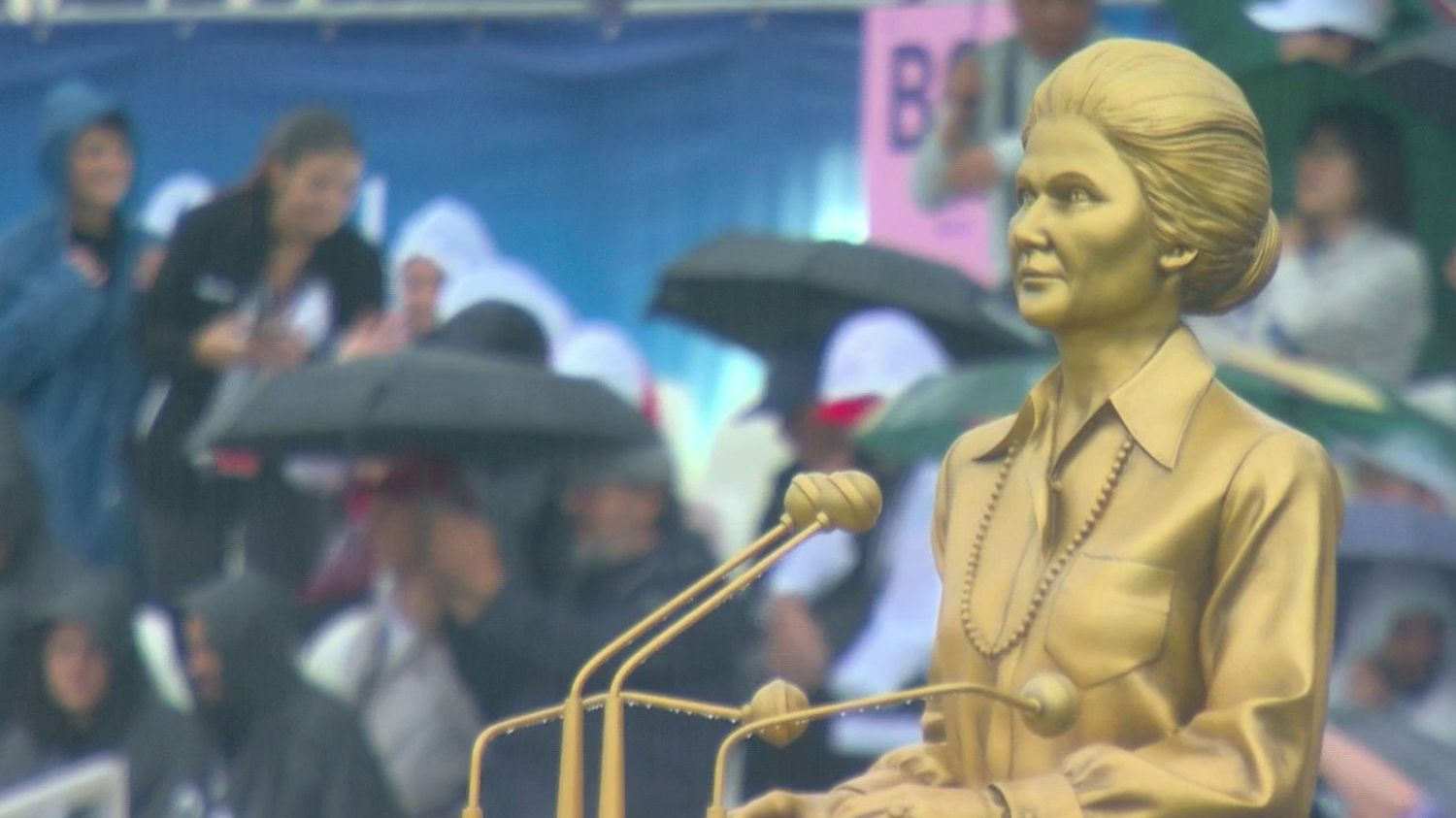These ten statues, positioned near the National Assembly, pay tribute to heroines of French history who have been made invisible.

Published
Update
Reading time: 2 min

Paris 2024 wanted to pay tribute to the women who wrote the history of France. During the opening ceremony of the Olympic Games, Friday, July 26, during the sixth tableau entitled “Sorority”, ten “golden women” were highlighted, represented by statues posted near the National Assembly, a symbolic place, since it is only decorated with numerous statues paying tribute to male historical figures.
Thomas Jolly and his team wanted to make these illustrious women visible with these statues that will be left as a legacy to the city of Paris. In the streets of the capital, there are 260 statues of men and only about forty women. Franceinfo presents each of the ten women whose memory was honored during this ceremony.
Olympe de Gouges (1748-1793) is a a woman of letters but also a political figure who left her mark on her time. She wrote the Declaration of the Rights of Woman and the Female Citizen in 1791 during the French Revolution. She campaigned for the abolition of slavery and was guillotined in 1793.
Alice Milliat (1884-1957) was a high-level athlete. In 1922, she organized the first Women’s World Games. Thanks to her commitment, the Olympic Games significantly increased the number of disciplines open to women.
Gisele Halimi (1927-2020) was a lawyer, activist and political figure committed to the defense of women’s rights, the fight against war crimes and colonialism. She was at the origin of social progress such as the legalization of abortion or the classification of rape as a crime.
Simone de Beauvoir (1908-1986) was a philosopher and writer, a leading figure in the fight for gender equality and against all forms of injustice. In 1949, she published The Second Sexwhose global success is reshaping feminism.
Paulette Nardal (1896-1985) was an intellectual, journalist and writer. A pioneer of black feminism and the literary movement of négritude, she was also the first black woman to study at the Sorbonne. She co-founded The Black World Review in 1931.
Jeanne Barret (1740-1807) was an explorer and botanist. Disguised as a man during Bougainville’s expedition to the Pacific Ocean, she is known for being the first woman to circumnavigate the world from 1766 to 1769. She contributed to the collection and identification of many plant species.
Louise Michel (1830-1905) was a schoolteacher, writer, anarchist and feminist activist. She actively participated in the events of the Paris Commune in 1871. Deported to New Caledonia, she continued her fight by opposing France’s colonial policy.
Christine de Pizan (1364-1431) was a woman of letters. A philosopher and poet, she wrote, among other things, The City of Ladieswhere she exalts illustrious women and imagines a female government.
Alice Guy (1873-1968) was a film director, screenwriter and producer. Her film The Cabbage Fairyreleased in 1896, is considered the first narrative film.
Simone Veil (1927-2017) was a politician and magistrate. On November 26, 1974, she presented the bill on the decriminalization of abortion to the National Assembly, which would play a crucial role in the legalization of abortion in France. Also involved in European construction, she was the fifth woman to enter the Pantheon.
